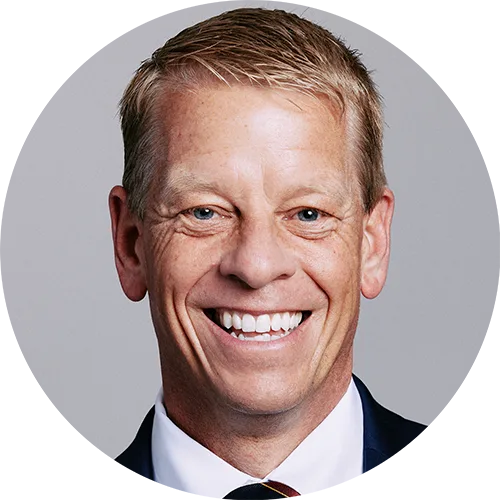Azusa Street

On this episode of 5 Minutes in Church History, Dr. Stephen Nichols takes us to 312 Azusa Street, the warehouse-turned-church in Los Angeles where William Seymour led his famous revival meetings.
If you were here on April 18, 1906, and you happened to pick up a copy of the Los Angeles Daily Times, you would have been met with the headline: "Weird Babel of Tongues." What are they talking about?
They are talking about an event an occurred on this very spot of 312 Azusa Street. At the time it was just a little side alley, and today it's closed off to traffic. There is a park here, and there is no sign whatsoever of the building that was all the rage and the subject of the headlines in 1906.
It was here that William Seymour led revival meetings. Seymour had come to Los Angeles and preached to a congregation that did not like his sermon at all. They actually padlocked him out of the church. He then went to a home on Bonnie Brae Street, continued his preaching, and hundreds would come to hear him. Then he came to Azusa Street.
He came to a building that at one time was a church, and then it was a warehouse, it may have stored lumber at one point, and then it was vacant. He moved into it, and eventually thousands would come to hear him preach. This was a time of revivals, it was a time of speaking in tongues, and there were healings and stories of miracles.
Seymour had a particular doctrine that he was promoting. It was a unique, new, and particular doctrine, and it was this: that the baptism of the Holy Spirit occurs subsequent to salvation. He said that the sign of that baptism is speaking in tongues. That was the weird babble of tongues that caught the attention of the editors over at the Los Angeles Daily Times.
Thousands would come here and participate in these revival meetings. What happened here flooded all over the country. In fact, it flooded all over the world. Probably the largest Christian movement of the twentieth century is the charismatic Pentecostal movement. And that movement in its twentieth-century manifestation started at this very spot of Azusa Street in 1906 in California.
The revivals here lasted almost a full decade, well into 1915. Thousands of people attended the revivals that occurred here at Azusa Street. But it quickly spread around the world. It eventually led to denominations like the Assemblies of God with its belief that again, the baptism of the Holy Spirit is after salvation, not all Christians are baptized in the Holy Spirit. To have the full Christian life, you need the baptism of the Holy Spirit after salvation, and the sign of that is speaking in tongues. Later, this would become the charismatic movement, and this Pentecostal charismatic movement would spread all over the country and all over the world.
Seymour was the son of a former slave. He was one-eyed. He was trained by a man named Charles Parham. Parham began his time in Topeka, Kansas. He had a little Bible institute there and was a revivalist. He set up another Bible institute in Houston. It was there in Houston that Seymour came under the influence of Parham and took in his doctrine and his approach to preaching. Then he brought that with him here to Los Angeles and the Azusa Street revivals.
That was back in 1906. Nowadays, there is not even a building here to mark the spot. One time it was planned to be painted as a mural, but that did not materialize. But here it was, Azusa Street in Los Angeles, California in 1906. The beginning of the Pentecostal charismatic movement and a wave that would spread across the twentieth century.
Recent Episodes
Church History Resolutions for the New Year
December 31, 2025|General Church History
Christmas in New England
December 24, 2025|The Person of Christ
A Little Church History of a Middle Colony: The First Great Awakening
December 17, 2025|American Church History
A Little Church History of a Middle Colony: Early Influences
December 10, 2025|American Church History
Gunpowder and a Proclamation
December 3, 2025|Geographical Perspectives
Thanksgiving in Church History
November 26, 2025|American Church History
